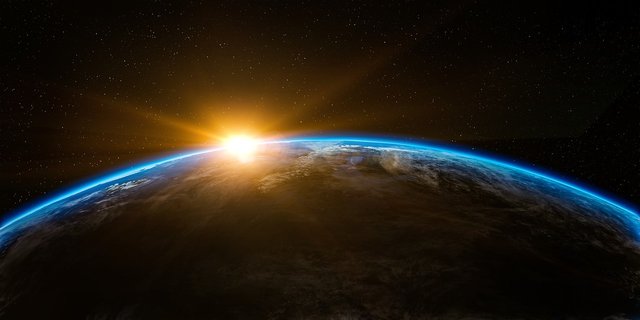
IV. Physical Reality
Physical reality, like Process, divides into two distinct aspects, what we commonly consider forces and material entities. According to Whitehead, it is not enough simply to ask what things consist of materially, we must search into things more deeply to realize the full extent of their constitution. All material entities, physically and formally reduce to concrescence. As we have said, “there is no ‘the concrescence’ and ‘the novel thing’: if we analyze the ‘novel thing’ we find nothing but the concrescence.” [321] Thus, if we should take any “novel thing,” any satisfied concrescence, for example, a pen; if we should analyze the thing, we should find that its constitution is nothing but the concrescence.
The concrescence, we said, is a process of feeling whereby elements which are originally felt as alien are taken into the unity and immediacy of subjective form. In this way, material entities, in their “real internal constitution,” are densities of relationships with actual entities conjoined with eternal objects.
Actual occasions do not exist apart from conjunction with eternal objects. “An actual entity’s process of becoming is a process of acquiring definiteness by a series of decisions to select or reject various forms of definiteness (eternal objects).” [A Key to Understanding Whitehead’s Process and Reality, 220] There can be no actual entity without some definite form. With a complete lack of definiteness, an occasion takes on the same characteristic that it has when in it has a complete lack of permanence. It will have either a form which is constantly changing, or no form at all. In either case, an actual occasion which lacks any definiteness cannot be said to be any “one thing,” which is contrary to the meaning of “actual occasion.” Consequently, there is no actual entity which does not have some definite form.
An occasion derives its definite form through its integration of particular eternal objects with its physical prehensions of the external world. This integration, however, is nothing more than the unification of a diverse “many” into a novel “one,” the concrescence. Consequently, the formation and constitution of all material entities reduce to concrescence.
Similarly, all forces reduce to time, to transition. Take, for example, a falling body. Originally, the body is held suspended in a position of high potential, it is then released and begins to fall. Yet, in any given moment there is no force. There is only the progression from the moment in which the body is in one location to the next moment, in which the body is in another location. Both the locations and times of these occasions may be contiguous, so that there need be no question concerning how the body moved from “here” to “there” without any intervening steps, suddenly appearing from nowhere. A conclusion such as this would, without doubt, be contrary to any experience that we have had of the behavior of objects in our spatio-temporal world. The world is continuous. Between the “here” and “there” of successive moments, there are no intervening steps.

Power up and Steem on!